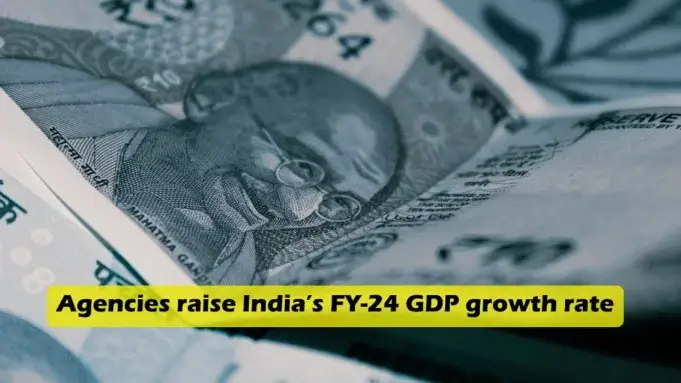Against the backdrop of a significant uptick in manufacturing activity and project investments, various research agencies and economists have raised their India’s GDP growth projections for the fiscal year 2024.
The release of robust second-quarter gross domestic product (GDP) numbers has prompted economic monitoring institutions to revise their growth forecasts upwards. In the second quarter of fiscal year 2024 (Q2-FY24), GDP expanded by 7.6 percent, thanks to increased activity in sectors such as manufacturing, construction, mining, electricity, gas, and water supply.
Both the government and the Reserve Bank of India (RBI) initially projected a GDP growth rate of 6.5 percent for the current fiscal year. This was seen as a significant expansion considering the gloomy global economic outlook.
However, several institutions have adjusted their growth predictions. SBI Research, for instance, revised its growth projection from 6.7 percent to 7 percent, based on a 7.7 percent real GDP growth rate in the first half of FY24. Barclays and Citigroup also increased their estimates from 6.3 percent to 6.7 percent, while Bank of Baroda anticipates growth to be within the range of 6.6 percent to 6.7 percent. Economic advisory firm QuantEco adjusted its growth forecast to 6.5 percent, citing festive demand and robust investment activity as contributing factors.
Madan Sabnavis, Chief Economist at Bank of Baroda, expects FY24 GDP to fall between 6.6 percent and 6.7 percent. Nomura raised its FY24 GDP growth projection to 6.7 percent year-on-year, up from 5.9 percent previously. They noted a substantial increase in fixed investment and government consumption in Q3-FY24 as the reason for the adjustment.
Economists caution that the healthy growth in the manufacturing sector during Q2-FY24 was partly due to a negative manufacturing deflator in Q2-FY23 when wholesale inflation (WPI) was negative during that period.
They also warn that the GDP growth in the second half of FY24 may be lower than the first half due to factors such as waning support from base effects, rising input costs, weak agricultural growth, tepid private investment, and a decrease in government capital expenditure, particularly from the central government, in the run-up to the general elections.











